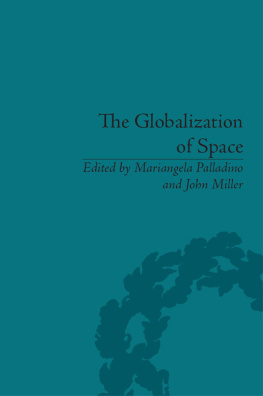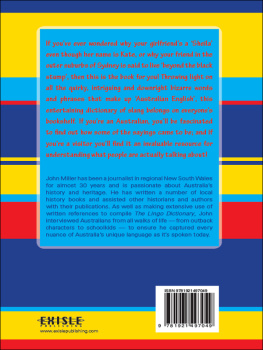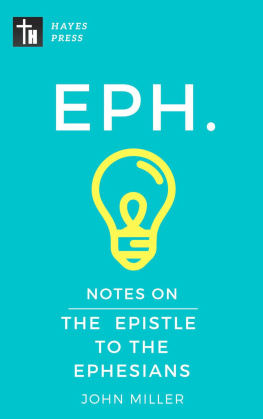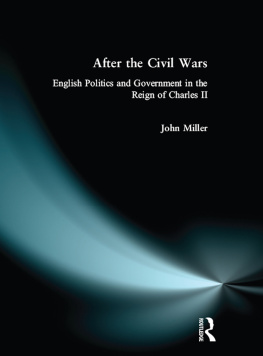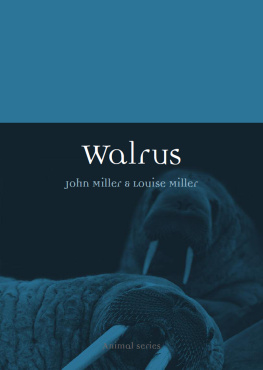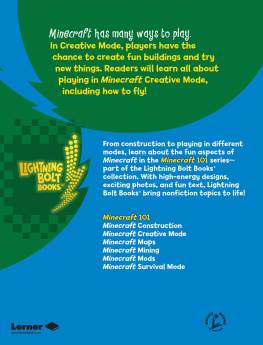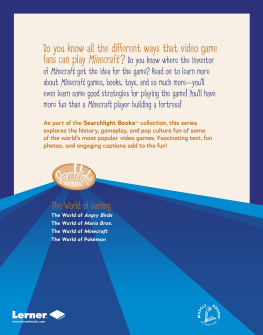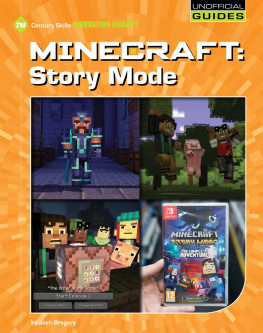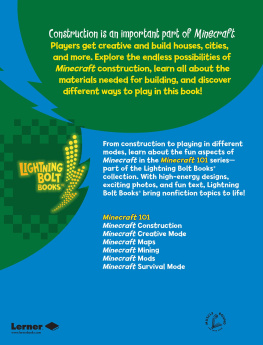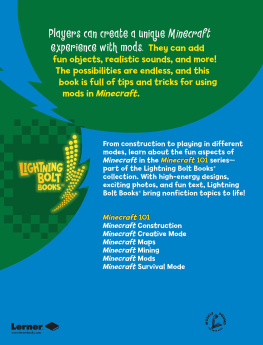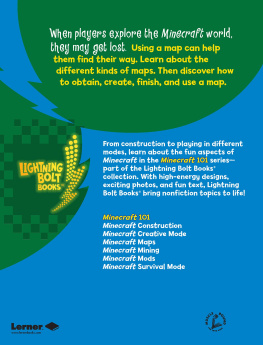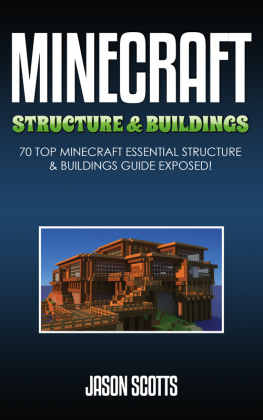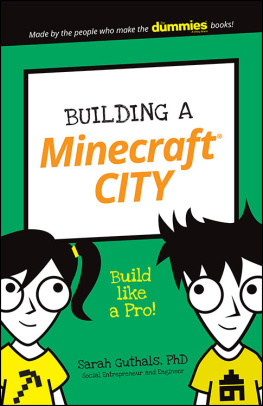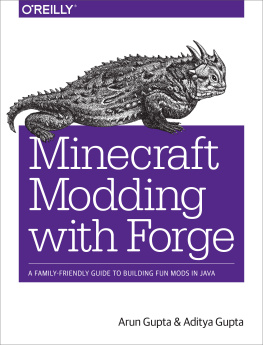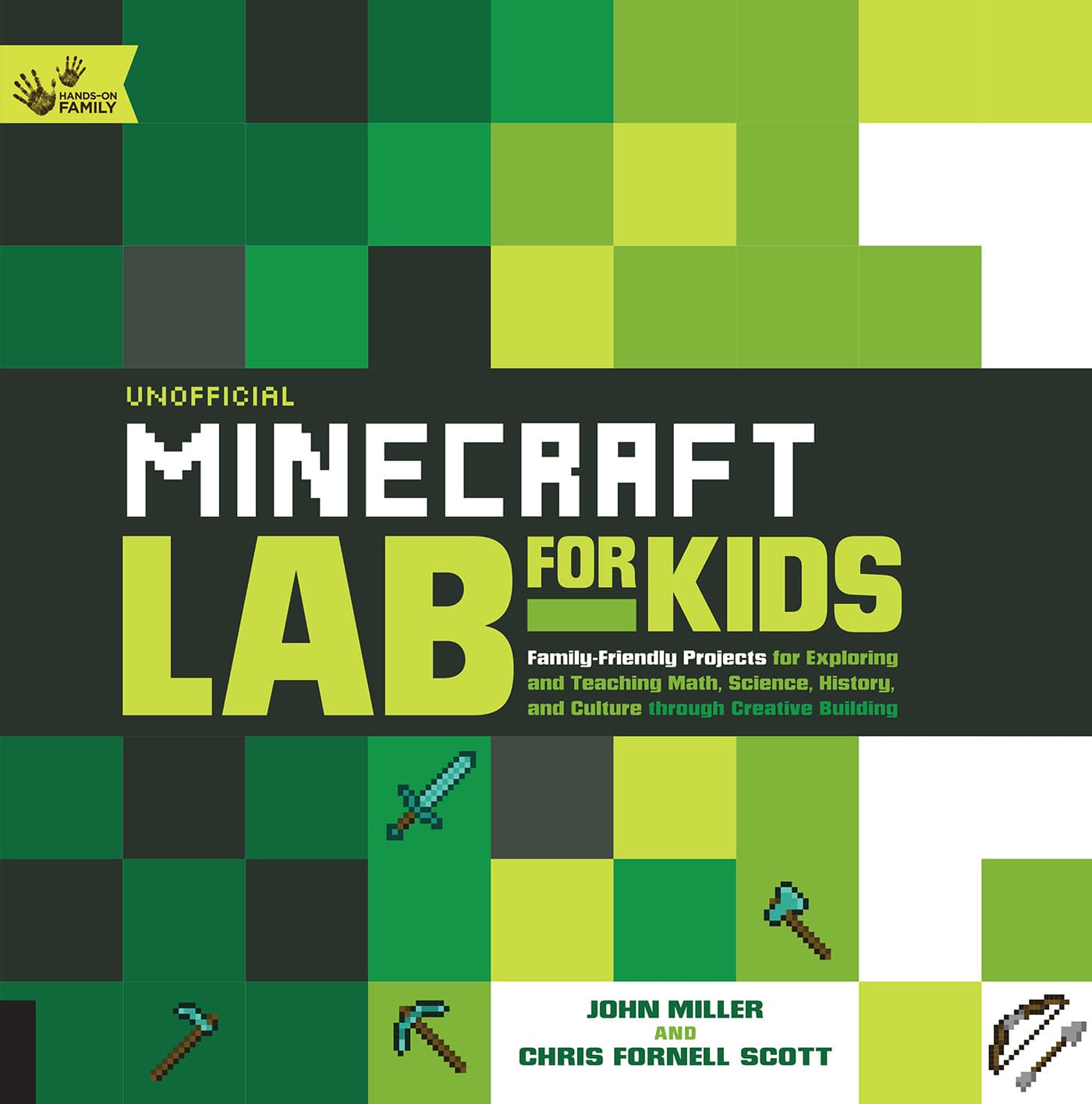UNOFFICIAL
MINECRAFT
LAB FOR KIDS
Family-Friendly Projects for Exploring and Teaching Math, Science, History, and Culture through Creative Building
JOHN MILLER
AND
CHRIS FORNELL SCOTT


2016 Quarto Publishing Group USA Inc.
First published in the United States of America in 2016 by
Quarry Books, an imprint of
Quarto Publishing Group USA Inc.
100 Cummings Center
Suite 406-L
Beverly, Massachusetts 01915-6101
Telephone: (978) 282-9590
Fax: (978) 283-2742
QuartoKnows.com
Visit our blogs at QuartoKnows.com
All rights reserved. No part of this book may be reproduced in any form without written permission of the copyright owners. All images in this book have been reproduced with the knowledge and prior consent of the artists concerned, and no responsibility is accepted by producer, publisher, or printer for any infringement of copyright or otherwise, arising from the contents of this publication. Every effort has been made to trace the copyright holders and ensure that credits accurately comply with information supplied. We apologize for any inaccuracies that may have occurred and will resolve inaccurate or missing information in a subsequent reprinting of the book.
Digital edition published in 2016
Digital edition: 978-1-63159-185-3
Softcover edition: 978-1-63159-117-4
Library of Congress Cataloging-in-Publication Data Available
Cover and Book Design: Kathie Alexander
Photography: Glenn Scott Photography on
NOT AN OFFICIAL MINECRAFT PRODUCT. NOT APPROVED BY OR ASSOCIATED WITH MOJANG.
To my wife Audrey, for believing in me.
JM
To the child in all of us who isnt afraid of where new adventures might lead. To my sons, Josiah, Eli, and Finn. You inspire me.
CFS
Contents
Guide
Introduction
In an age where games have multimillion-dollar budgets, high-end computer graphics, and Hollywood-inspired storylines, how can a game that comes with no instructions, no clear goals, and no-frills blocky graphics become a mega-hit widely lauded for its creative and immersive play?
Perhaps its because players walk away from a Minecraft session with a deep sense of fulfillment and are highly motivated to return and improve their skills. Minecraft challenges them to explore a new, unlimited world and interact with other players and the environment. They mine for resources and craft tools that they use to modify their environment to fit their needs. Or perhaps its because Minecraft is versatile and highly adaptable to any player at any experience level and has something to teach everyone. Its open-ended nature provides rich opportunities for exploration and discovery and satisfies a natural inquisitiveness while promoting detailed and deep conversations, both in and out of the game.

Adults might assume that playing Minecraft is just like playing any other video game, but kids know that Minecraft offers much more than entertainment. As kids become experts in Minecraft, they create a knowledge gap that is often difficult for adults to bridge. Players can speak the language of Minecraft while nonplayers may be confused.
This book bridges that gap. Its designed for adults who want to connect with their Minecraft players by improving their understanding of the game and by extending their childs learning with both in- and out-of-game activities. It employs analog (community) connections that encourage kids to interact with the adults in their lives. New conversations and paths of creativity will reveal themselves as you complete both the in-game and out-of-game portions of the individual labs and the quests (a set of four labs). In some instances, youll help the Minecraft expert with the analog connections, and at other times, the game expert will teach you how to build in-game portions of the lab.

WHAT CAN MINECRAFT TEACH?
You only need to peek just beneath the surface of Minecraft to uncover rich and varied learning experiences. Minecraft encourages players to create, share, and innovate as no other game has ever done before. It promotes continuous learning. Teaching and learning from others is as much a part of the game as building a shelter or fighting creepers. While playing in creative mode, with an unlimited supply of every block in their inventory available, players have the freedom to explore their imagination. Players monitor their inventories, conduct ongoing needs assessments, and consider options to expand and improve their characters status in the game. By learning more skills and discovering or crafting more resources, players better prepare themselves for each day, and the reward for their hard work is enhanced playability. When playing in survival mode, players must rely upon a varied and changing set of skills to achieve their immediate and long-term goals.

Minecraft encourages numerous positive traits and builds life skills and spatial understanding. Players develop problem-solving strategies for surviving each night while setting and prioritizing goals for the next day. Food is important, but so is shelter. Armor and weapons will help fight off mobs but require specific and often hard-to-find resources and crafting. It is only through perseverance and planning that players will be successful.
Further, players value the craftsmanship and skills of others while sharing knowledge and innovations, especially in creative multiplayer mode. They develop large-scale, imaginative, team-oriented projects and break down tasks to assign pieces to players based on skill sets. This interdependence builds positive relationships and flexible thinkers.
The vast amount of creative and humorous storytelling and adventure sharing online reflects Minecrafts popularity. Thousands of websites and YouTube videos are dedicated to design tutorials, building, and gameplay strategies. Survival tips, creative ideas, and answers to player questions are only a click or two away on the Internet. Younger players follow and often imitate their favorite YouTube stars, producing and sharing videos and tutorials of their own and emulating a business model for the twenty-first century.
MINECRAFT IN SCHOOLS
Educators are using Minecraft as a tool for learning in most grade levels and content areas in classrooms around the world, and have discovered that their students remain engaged, highly motivated, and excited to share their expertise while demonstrating their learning as they use a favorite game.
The games encouragement of sharing ideas and seeking help via a thriving and popular Google Group energizes educators as well. Some teachers create and share Minecraft worlds and the associated lesson plans that target specific concepts, skills, and units of study. Some worlds come complete with buildings and nonplayer characters ready for students to explore and interact with. Other teachers design worlds for focused student or team collaboration and task students with building out the world to meet content objectives. Educators are also connecting classrooms globally through large-scale team builds and exploration, with multiple schools learning in a single world designed by a team of teachers.


